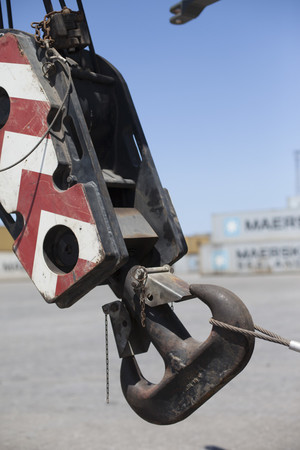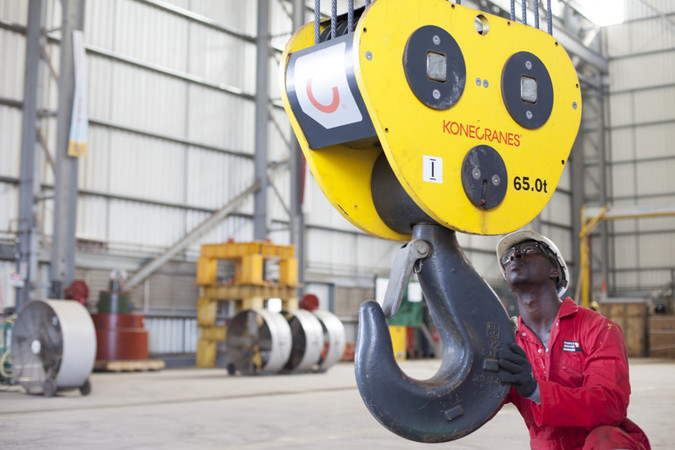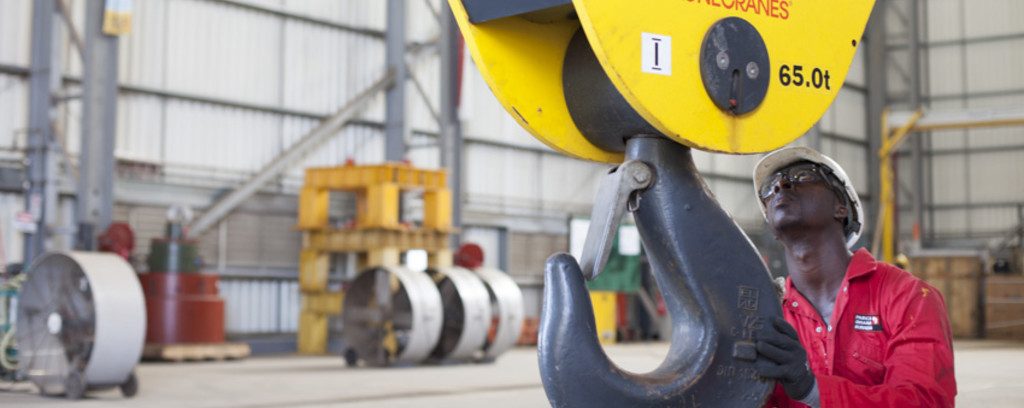“A hook block is an assembly to which the hook of a hoist or crane is attached; it typically consists of a steel enclosure housing a number of sheaves or pulleys that carry the ropes or chains that facilitate the lifting of a load. Although this sounds unnecessarily complex, it would be impossible for a crane or hoist to operate efficiently and safely if the crane hook was simply attached directly to a rope and then raised or lowered by the cranes boom and winch system. A hook block allows for a considerable amount of flexibility and safety in lifting operations as opposed to a direct connection.” Paul Scott, on WiseGeek

Knowledge
- Provide instruction—Instruct employees on the safe use of hook blocks to control or eliminate hazards.
- Know the load weight—The weight of the load must be identified to determine proper reeving and rigging of the hook block.
- Check the I.D. tag—All hook blocks require a legible service identification tag with the rated capacity and weight to ensure that overloading does not occur.
Safety
- Never overload a hook block—Know your working load limits and adhere to them to avoid failure or costly damage.
- Never ride on a hook block or load—Remain compliant and avoid injuries by ensuring personnel are always clear of loads about to be lifted and suspended loads.
- Rig properly—Hook load rigging must be centered in the base of the hook to reduce the risk of disengagement.
Conditions
- Operating in extreme temperatures—Review your service I.D. tag for load limits in extreme cold or heat. Consult your local Manitowoc dealer about precautions for operating in extreme temperatures.
- Operating in alkaline or acidic conditions— Metal embrittlement, which weakens the strength of the metal structure, can cause sudden failure of equipment. Consult your local Manitowoc dealer about precautions for operating in unusual conditions.

Inspections
- Inspect your equipment—Check the hook block and its fasteners for wear or damage every day to avoid structural or mechanical failure.
- Inspect the hoist rope— Ensure the hoist rope is not reeved over any of the sheave guide pins.
- Check the sheave groove profile—Make sure the sheave groove profile matches the hoist rope diameter.
- Inspect the hooks— Hooks need to be inspected once a year for regular wear.
- Check the safety latches—Latches must be in good working order and replaced immediately, if damaged.

